Home › Forums › The Colonial Era › Locally Grown Apples
Tagged: Edgehill Church
- This topic has 4 replies, 3 voices, and was last updated 1 year, 6 months ago by
COGGINSS.
-
AuthorPosts
-
-
October 6, 2022 at 8:54 pm #2937
It is apple picking season so I thought I would mention some historical references to apple orchards in our area. There was indeed a time when you didn’t need to drive an hour upstate to go apple picking. In fact, apple orchards were plentiful.
Some maps of the area dating from the American Revolution depict neat rows of trees in certain places to indicate the presence of an orchard:
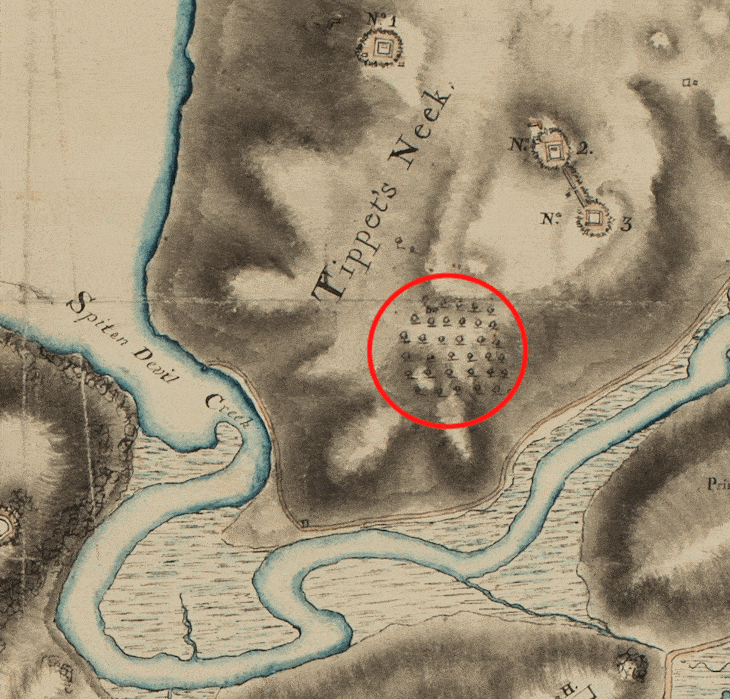
“Kingsbridge.” William L Clements Library, University of Michigan The hilly and rocky soil of “Tippetts Neck,” a.k.a. Spuyten Duyvil Hill, would not be great for growing grains so it only makes sense that it would be used for orchards. The above orchard was located on the eastern side of Spuyten Duyvil Hill across the creek from Marble Hill. That orchard could have been owned by the descendants of George Tippett, one of the first English colonists in our area or perhaps it belonged to Samuel Berrian, who also had a house nearby. The below British map snippet of Spuyten Duyvil Hill shows another orchard owned by the Tippetts that was chopped down during the war:

Library of Congress. Link to map. The above orchard was apparently in the vicinity of W. 231st Street and Netherland Ave. Perhaps the trees were cut for firewood or perhaps the to provide a clear line of sight from the nearby fortifications. The Tippett house depicted on this map was also likely destroyed during the war.
A patriot soldier, Nathan Beers, was with Washington’s army in our area on July 22nd 1781 and he wrote the following in his journal:
22d Sunday at Day Break the army halted on the Heights Commanding Kings Bridge Day Spent in reconnoitering the Enemy’s Works . . . Dined in orchard near Cortlandts House
According to Harry Emery, a long-time resident of Riverdale, Cortlandt’s orchard was to the northeast of the Van Cortlandt mansion in today’s Van Cortlandt Park. Coincidentally, Harry Emery also wrote that his grandfather, Nicholas Berrien, had a farm in “Yankeetown” (Fieldston Road between W. 253rd and 255th) which had cherry pear and apple trees.
During the Revolution, a Hessian soldier wrote about having Sunday services in Cortlandt’s orchard but he was probably not referring to the one in today’s Van Cortlandt Park. The Van Cortlandts owned another mansion, “Upper Cortlandts,” where W. 238th St. and Waldo Ave are now. That was the home owned by Frederick van Cortlandt II, which was occupied by Hessian soldiers during the Revolution:

The “Upper Cortlandts” mansion at W. 238th St. and Waldo Ave While visiting the “Upper Cortlandts” property in 1893, Felix Oldboy wrote:
On an apple-tree, still-standing, Jacobus Van Cortlandt carved his name nearly two centuries ago.
I imagine that tree was part of the orchard where the Hessian soldiers held their religious services.
In 1787 William Hadley sold some land to Augustus van Cortlandt near today’s Broadway and W. 242nd Street, which included “the barn, fences and outbuildings (the blacksmiths shop, cyder mill and barack excepted).” Interesting to think there were buildings in our area entirely devoted to making cider.
The center of Kingsbridge was once the “farm or plantation” of Alexander Macomb, who lived in the mansion at today’s W. 230th Street in Broadway. In addition to owning over 3.5 million acres of land in upstate New York, in 1810 Macomb’s Kingsbridge property boasted “a number of bearing apple trees; and a young orchard of between three or four hundred apple trees–Likewise a great variety of peach, pair, plumb, cherry and other fruit trees.” The next time you’re stuck in traffic on 231st Street imagine being in an orchard of hundreds of apple trees.
Just to the south of Kingsbridge, the Dyckmans had an orchard (I think Don Rice knows what variety of apple they grew) and to the east on the site of modern Fordham University the Corsa family had an orchard. To the north in Yonkers, Frederick Philipse had an orchard by his farm on the Saw Mill River.
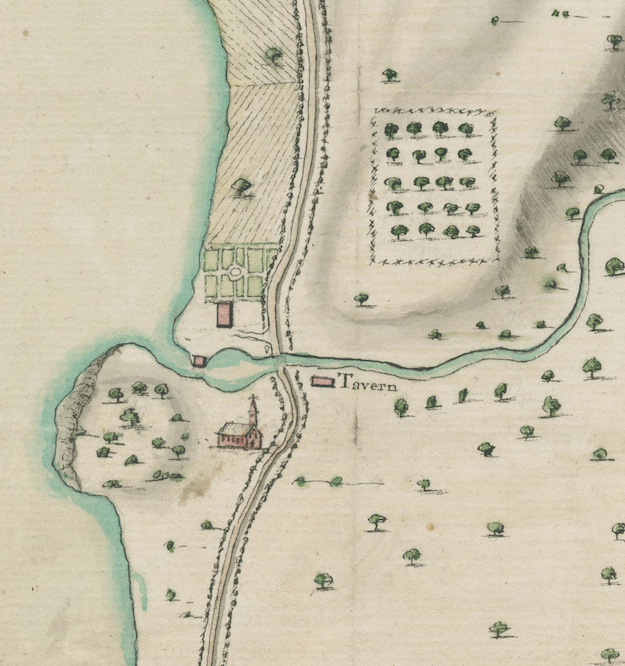
Orchard of Frederick Philipse at today’s downtown Yonkers. William L Clements Library, University of Michigan. Link to map. 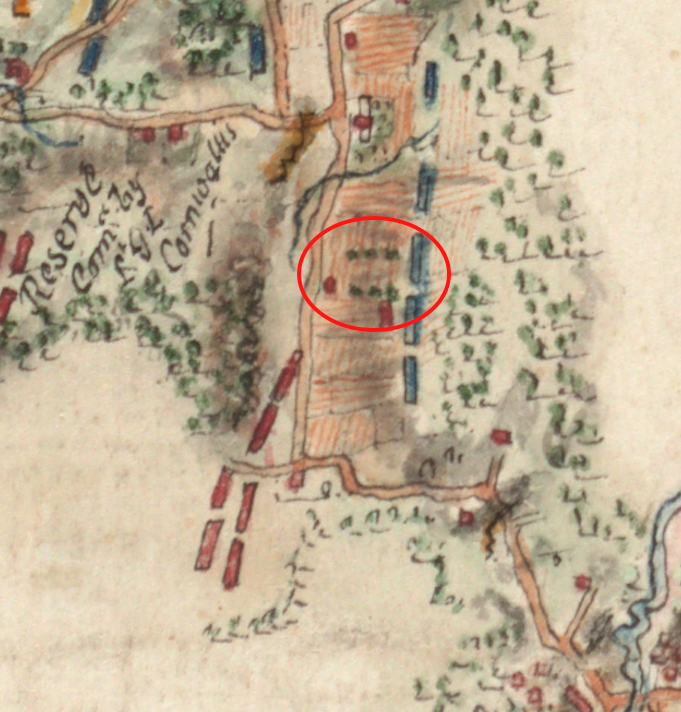
Corsa’s orchard on the site of modern Fordham University 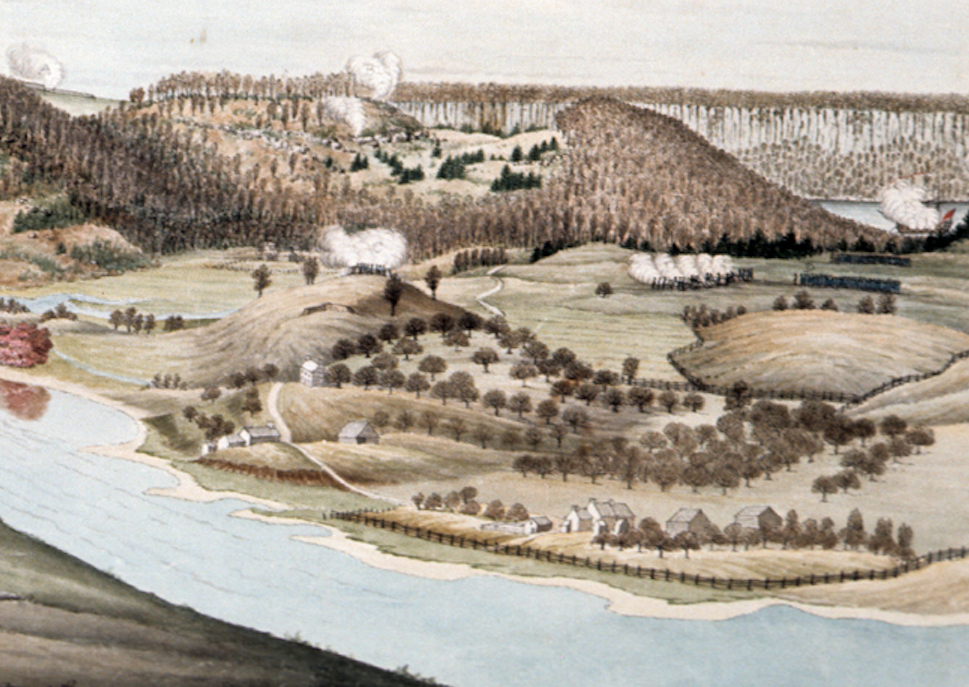
Dyckman orchard near the Harlem River in Inwood, painted by Thomas Davies, NYPL Collection 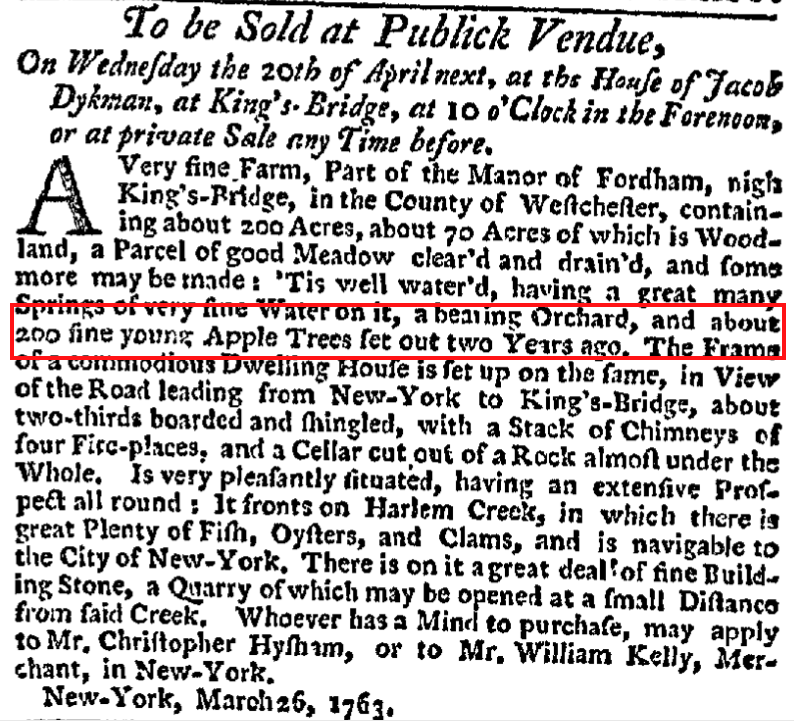
Real estate ad for a property in the Manor of Fordham, today’s Fordham Heights, 1763 New-York Gazette -
October 7, 2022 at 12:12 am #2938
Its October 7th and as I sip Pina Coladas in St. Augustine, I just enjoyed a stroll and cider via 1776 Kingsbridge. Thank you
-
October 7, 2022 at 7:45 am #2939
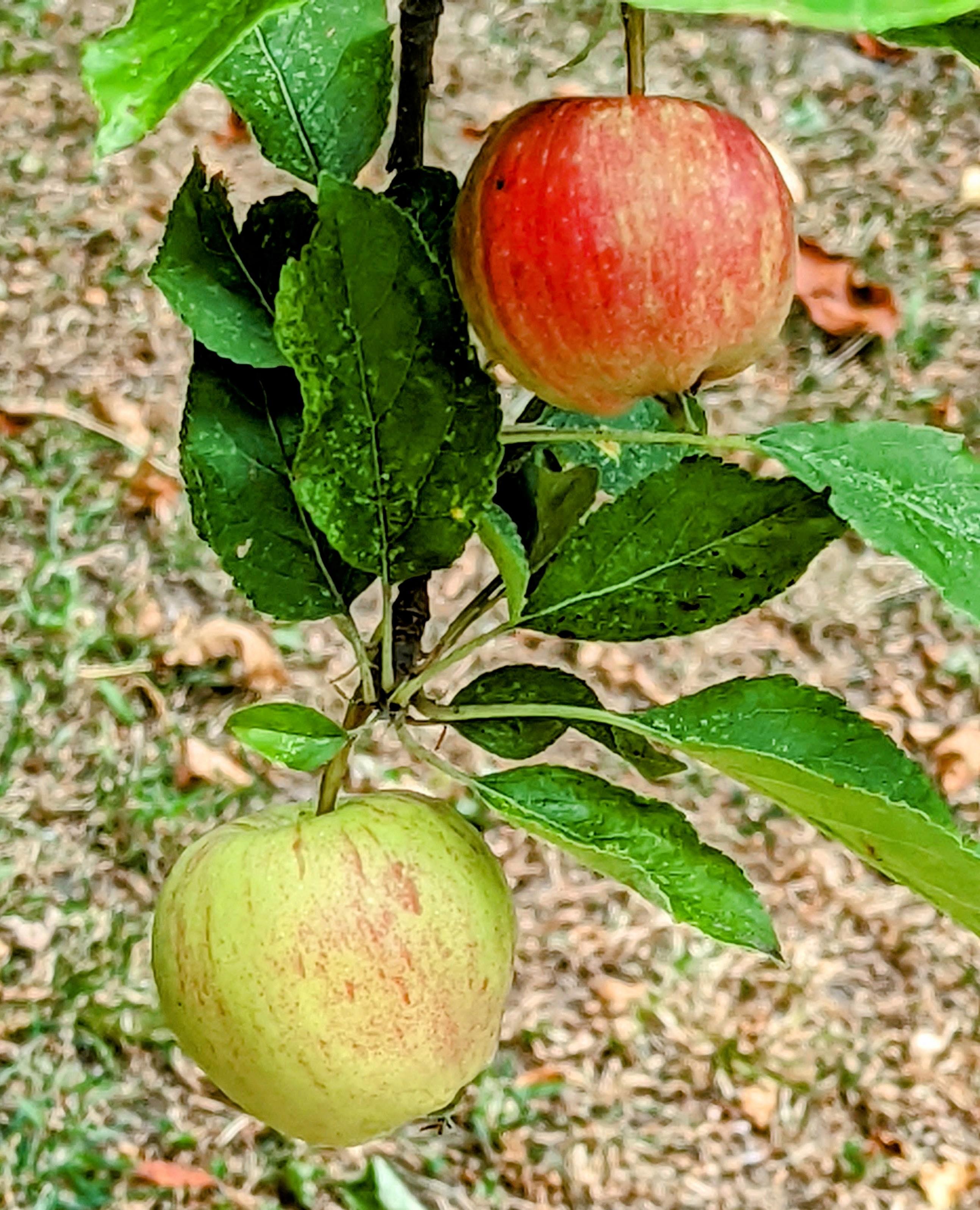 Apples growing on Edgehill Church in Spuyten Duyvil
Apples growing on Edgehill Church in Spuyten Duyvil -
October 7, 2022 at 7:45 am #2940
 Apples growing on Edgehill Church in Spuyten Duyvil
Apples growing on Edgehill Church in Spuyten Duyvil -
October 7, 2022 at 7:46 am #2941
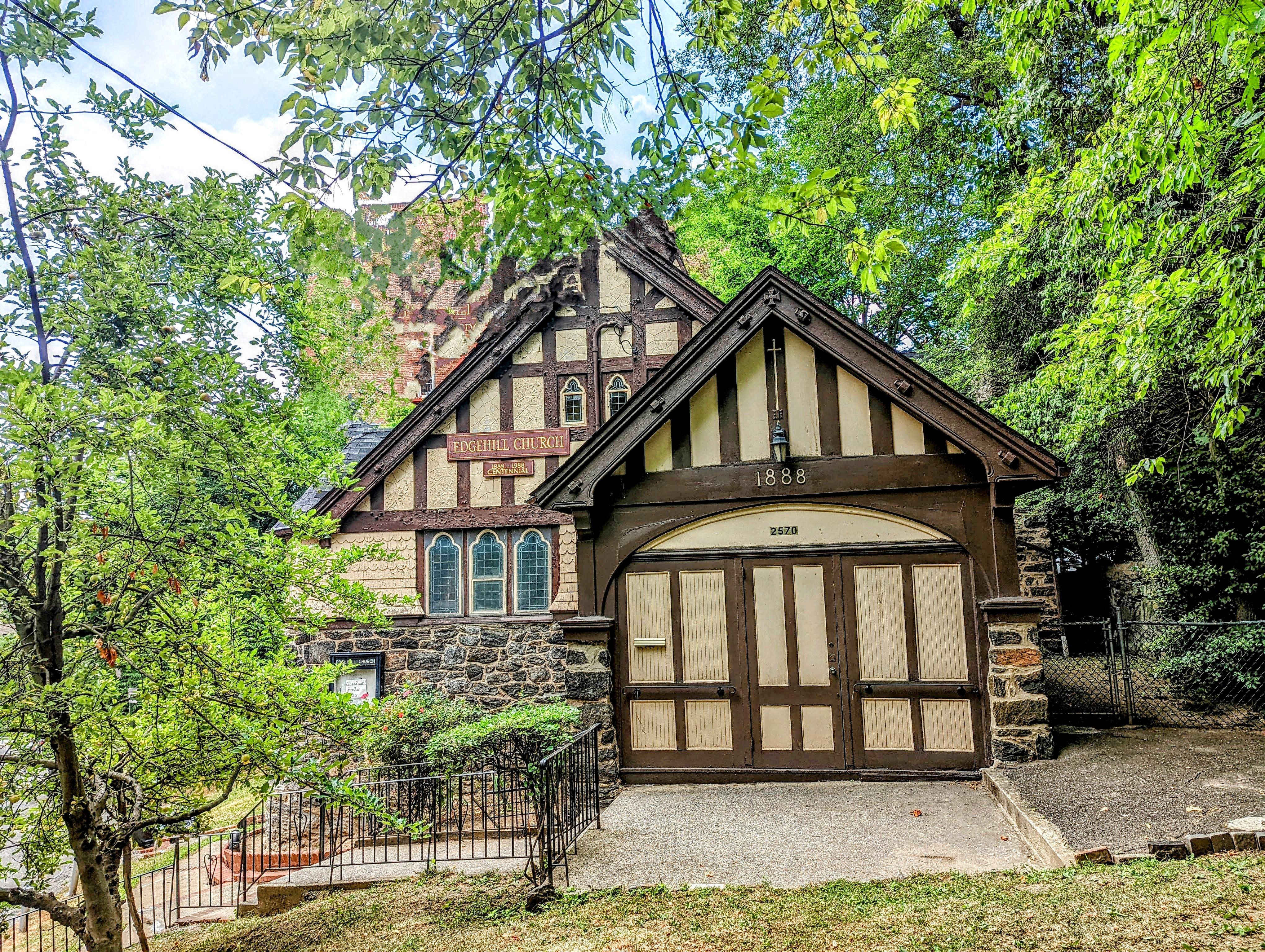
 Apples growing on Edgehill Church in Spuyten Duyvil
Apples growing on Edgehill Church in Spuyten Duyvil
-
-
AuthorPosts
- You must be logged in to reply to this topic.